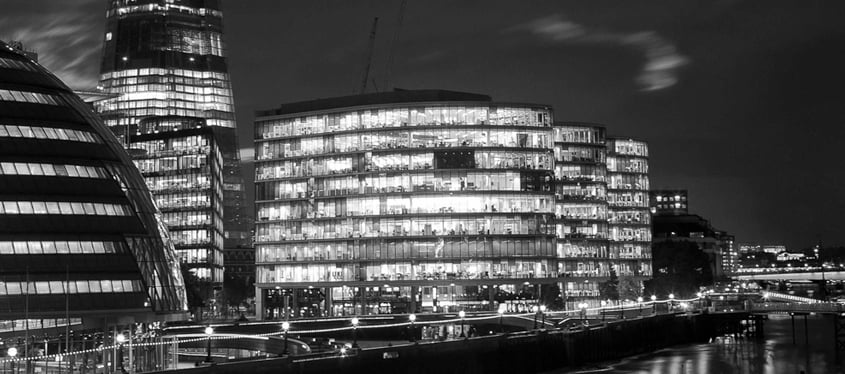Dress codes in the workplace – what’s the position?
As workplace culture has become more relaxed over the years, with the introduction of flexible working, more hot desking, working from home, dress down Fridays all becoming more common place, you might be forgiven for thinking that what you wore to work was no longer a matter of any concern. However, a cursory glance through the newspapers in recent months tells a different story. What we wear to work – and how employers deal with dress code issues – is very much a ‘hot topic’.
Why have a dress code?
In some organisations, a dress code is designed to project a certain corporate image, and will be of a general nature specifying ‘types of clothing’ – the ubiquitous ‘smart casual’ for example; in others, there are health and safety or hygiene reasons that demand a certain dress code – for example the wearing of a uniform or protective clothing. Employers that require employees to wear certain types of clothing need to make this clear, so more often than not, there will be a dress code policy in place.
What’s the problem with a dress code?
Managed properly and responsibly, there’s no reason why an employer should not have a dress code in place – for the reasons we’ve briefly looked at above, in many cases it makes sense. The problem comes when a dress code is discriminatory, and either directly or indirectly disadvantages one section of the workforce. In December 2015, the widespread requirement for women to wear high heels in many workplaces hit the headlines after Nicola Thorpe was sent homeby the employment agency she worked for, after turning up for an assignment at accountancy firm PwC in flat shoes, rather than the 2″- 4″ heels specified in the agency’s appearance guidelines. As Ms Thorpe rightly pointed out, the appearance guidelines did not impose a similar requirement on men. Following this incident, and a subsequent petition which received 150,000 signatures, a government report produced jointly by the committees for Petitions and for Women and Equalities found that despite the requirements of the Equality Act 2010, the law is not applied correctly and many workers are subjected to discriminatory dress codes – in particular women. It’s not just clothes either – rules relating to how clothes are worn (for example, women being asked to unbutton blouses), makeup, jewellery, and the application of hair dye were all revealed as being common place.
Not just direct discrimination on grounds of sex
Although a dress code can have different rules for men and women, if the rules for one group are more onerous, this can amount to direct discrimination. It’s very unlikely that you will see a dress code that specifically stipulates rules about the height of heels, the type and amount of make up worn applying to both men and women. It’s easy to see how a dress code can be discriminatory, but scratch the surface, and the issue runs far more deeply.
Indirect discrimination
Many dress codes address matters such as tattoos and piercings, requiring them to be hidden (tattoos) or removed (piercings). However, statistics reveal that one in three young people have a tattoo and almost half of women aged 16-24 are estimated to have a non-earlobe piercing – so this aspect of a dress code could conceivably discriminate indirectly against younger people on grounds of age. Likewise, a dress code requiring adherence to certain cutting edge fashions could discriminate against older people.
Religious discrimination
While the Government committee was reporting on dress codes that discriminate against women, another issue, that of indirect religious discrimination, was playing out before the European Court of Justice. The ECJ heard two cases from different Member States, involving Muslim employees dismissed for wearing headscarves. The decision, which fuelled headlines suggesting that it was OK to ban headscarves from a workplace, was in fact far less permissive. The employer in one of the cases operated a dress code designed to be neutral in respect of political, philosophical or religious beliefs. The employee told her employer that she intended to wear an Islamic headscarf, in spite of the policy. In the other case, the employee had worn a headscarf from the outset of her employment, but had been asked to refrain from wearing it in the future following a customer complaint. The ECJ decided that a dress code requiring religious neutrality was not directly discriminatory. However, such a requirement would have to be ‘objectively justified’ and applied across the board in order to prevent a finding of it being indirectly discriminatory. In the case of the employer who took action following a customer complaint, the ECJ decided that this was discriminatory and could not be justified.
Drafting a lawful dress code
Against this background, we would certainly advise all employers to take a close look at their dress code policy and review and update it as necessary. Where, as an employer, you wish to insist on certain items of clothing to be worn (such as uniforms or protective clothing), you should consider in each case what the purpose of the item is, whether the requirement is necessary, and can be objectively justified. Where your dress code is made of more general guidelines, for example in order to convey an overall impression rather than because of a need to meet a health and safety risk, make sure that the guidelines are no more difficult for one section of your work force to comply with than the rest. Requiring one section of your workforce to wear a specific item of clothing – high heels being a case in point – is something to avoid. Bear in mind that however carefully your dress code is drafted, you may need to make ‘reasonable adjustments’ to accommodate certain employees – for example a disabled employee who may not be able to comply with a certain aspect of the policy. It’s also worth exploring the impact of your dress code on employee morale and the public perception of your business. In the diverse society in which we live and work, a dress code that seeks to create neutrality and/or homogeneity may well be badly received. By considering all possibilities in advance, you are more likely to be able to draw up a comprehensive yet reasonable dress code policy that not only fulfils the aims you are looking for, but is lawful. If you are an employer who would like advice on your existing dress code, or help drawing up a new dress code, or an employee concerned about an aspect of your employer’s dress code, we can help! We are a niche employment law practice covering London and the South East of England with extensive experience in discrimination law. Get in touch to find out how we can help.







